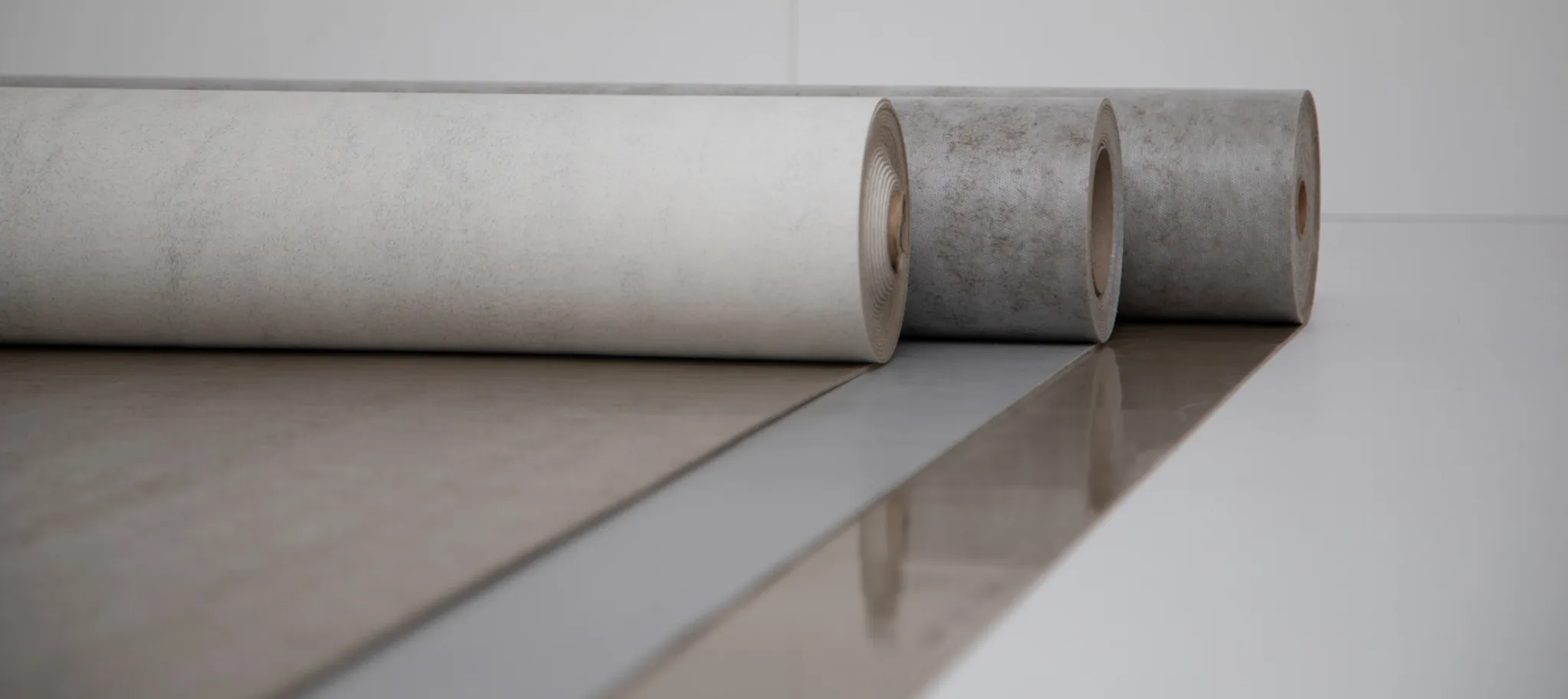Underlay – you can’t see it, you don’t walk on it, and once it’s laid it can be forgotten. Only, none of this entirely true.
Because whilst underlay may indeed be invisible, it has a critical role to play in absorbing the forces bearing down on the flooring above it, reducing the noise these forces generate, and maintaining the structural integrity and visual condition of the flooring itself.
And what sadly all too often occurs is that flooring is teamed with inappropriate underlay - and the outcome is a high-quality flooring product whose lifespan, in comparison to the significant investment made in it, is vastly reduced by the material it sits on.
It is the ultimate false economy, so what do those buying the underlay - architects, designers, retail stockists and their customers – need to know about how to avoid it?
Foam: the conventional wisdom
What underlay conjures up in most people’s minds is rolls of light, blown foam (XPE).
Is there anything wrong with this material? Not of itself. Indeed, it has many benefits: it’s light, easy to lay and cut, and low-cost.
In short, it’s arguably a valid choice for, say, lightweight flooring in low-footfall areas that doesn’t bear much weight from heavy objects.
But it’s important to understand both the limitations of foam, and – rather more urgently - how these can undermine the value of the flooring laid upon it if that combination is not properly thought through.
The weakness beneath
Foam is essentially fragile; although its air pockets help absorb shock, they are quickly compressed to the point where they are robbed of their shock-absorbing qualities.
Put this material under, say, rigid or click flooring, and what you potentially get is a tremendously resilient overlayer that is let down by the lack of support from the layer beneath it. The connections break, and the underlay effectively becomes the reason for a quality floor’s failure.
In fact, an estimated 90% of the rigid and click flooring types available on the market would fail the industry-standard tests for resistance to furniture casters if laid on foam underlay.
What, then, is the alternative?
PU – an underlay panacea?
Let’s be clear here: there is no one “silver bullet” for all underlay challenges in all situations.
Fit the flooring to the room and the room to the flooring, goes the dictum, and the characteristics of any particular location will ultimately dictate the choices. Foam isn’t perfect, but like other options it has its place.
On the other hand, the world moves on, and so, with it, should our expectations of what underlay can deliver. This is where PU – polyurethane – outperforms, and for a number of reasons.
PU underlay done the wineo way is made with a unique organic material called ecuran, composed of natural, non-toxic products such as castor oil or rapeseed oil and chalk, and this composition gives it many significant benefits over traditional foam.
Firstly, it has exceptional shock-absorbing qualities that don’t degrade with use. It is a mat rather than a membrane, and it doesn’t rely on delicate air pockets.
Indeed, the resetting capability of ecuran – its ability to regain its shape after compression - is close to 100%, which perhaps explains why this form of underlay has a typical lifespan of up to 30 years (as opposed to five to ten years for foam) and is sold widely in the industry for use with many different flooring brands, not just wineo. (Just look for the mark on the packaging).
Secondly, PU underlay of this type is exceptionally stable, so it provides appropriate support for all flooring types - rigid, click, flexible, hard, soft, and others. Teaming the right PU underlay with the right flooring type even enables us to extend the flooring guarantee to end customers for a further five years.
Thirdly, PU underlay delivers significant acoustic reduction properties for both walking sound (footfall noise reflected back into the room) and impact sound (transmitted in many directions, including through ceilings and walls).
Fourthly, PU can be rolled out over existing flooring with no need for self-levelling compounds, wet glue, and drying time, making it a rapidly deployable solution that reduces project time scales.
And lastly, PU, unlike foam, does not block heat from underfloor heating. Instead, its very low thermal resistance promotes rapid and efficient transmission of heat into the room’s atmosphere, ultimately reducing fuel and energy consumption.
Sustainability: the customer agenda
The last point above also touches on an ever more pressing requirement from the point of view of many flooring customers and end-users: sustainability and environmental credentials.
Flooring brands such as PURLINE already address these concerns, but why should sustainability stop there? Why should the underlay not enable customers to make a stand for sustainability too?
Here, again, PU is ahead of the curve. Ecuran-based PU underlay is certified sustainable by both Cradle-2-Cradle and Blauer Engel, and in addition comes from a production facility that is 100% carbon-neutral.
Time to stop underestimating underlay
In summary, what is expected from underlay is changing.
On the one hand, there is a recognition that by injudiciously economising on the underlay in a high-value flooring project, there is a grave danger of wasting the investment made in quality flooring.
On the other, there is significant pressure to deliver a product that, as it sits under our feet and in our homes and offices, contributes to our wellbeing - without risking the planet in the process.
It’s a lot to ask from a roll of matting. But like the flooring, we’re on top of it.
If you’d like to learn more, give us a call on +49 (0) 5237 6090 or email us on info@wineo.de

